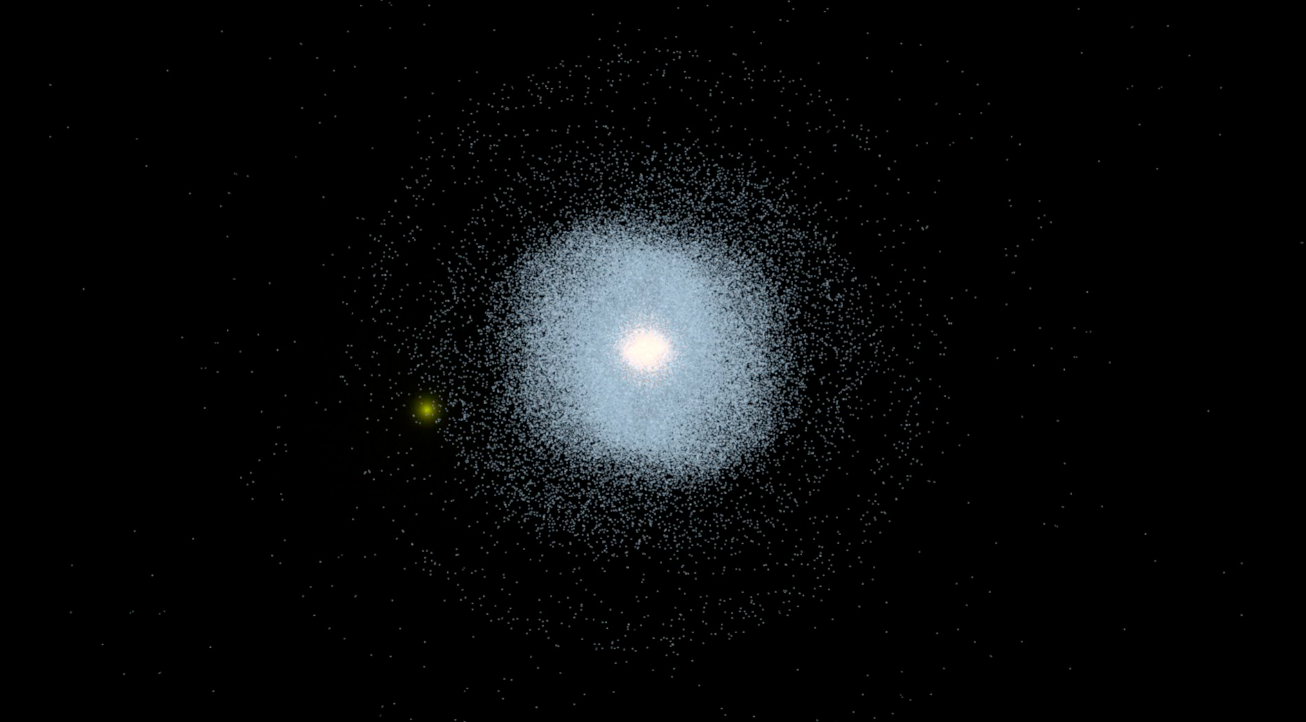
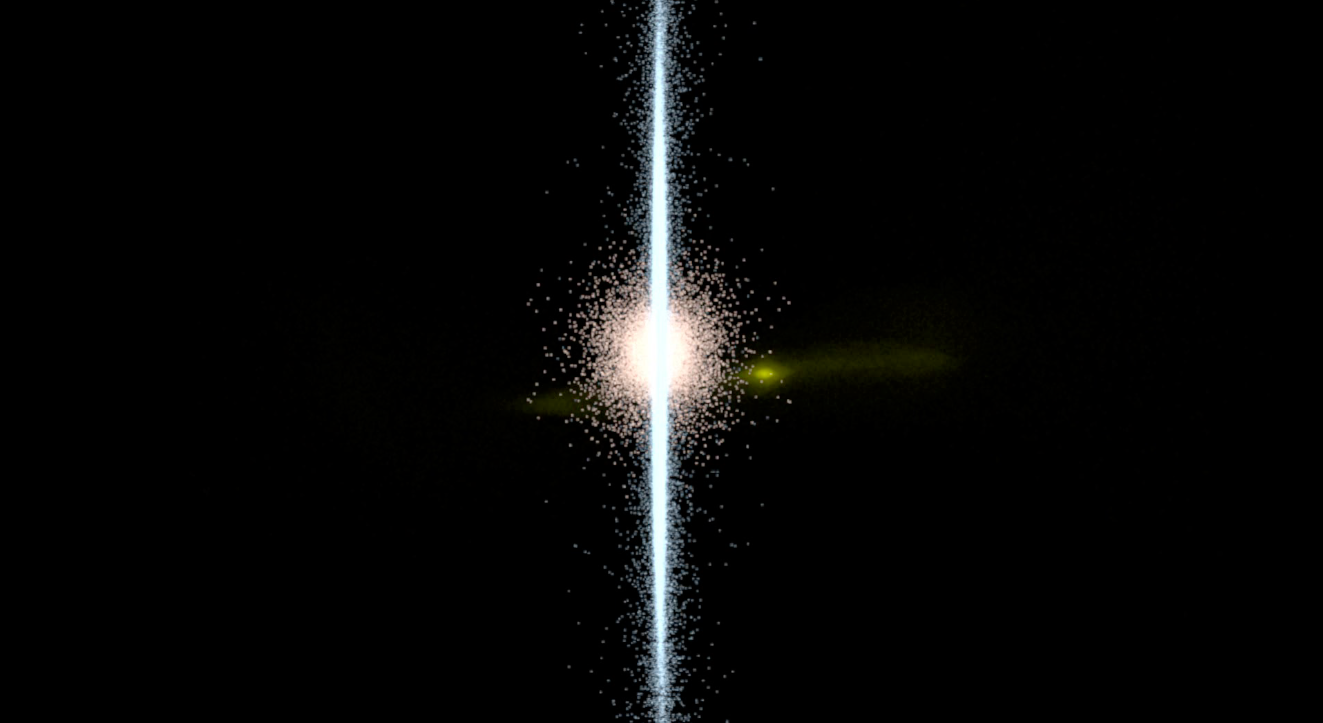
This simulation consists of approximately 1.5 million particles representing stars in two galaxies in a collision. The blue and brown stars are the disk and bulge of the larger galaxy, and the yellow stars are the disk and bulge of the smaller. The simulation was generated by Jeanette Meyers of Francis Marion University and Lih-Sin The of Clemson University on Clemson's Palmetto Linux Cluster.
| View over the disk ( animation ) | View across the disk, showing extended small galaxy ( animation ) |
 |
 |
| Camera fixed directly over the center of the galaxy | Camera rotates around the galaxy |
This simulation is from an 8th-order accurate fluid code by Richard Miller and Justin Foster from Clemson University (http://myweb.clemson.edu/~rm/) on Clemson University's Palmetto Linux Cluster. The simulation tracks many chemical species that occur during combustion. The first two animations are turntables for a single frame of output from the simulation. The third animation artificially erodes the water vapor field, showing the flame beneath it. The water vapor was given a green color purely for visual impact.
| Flame( animation ) | Water vapor ( animation ) |
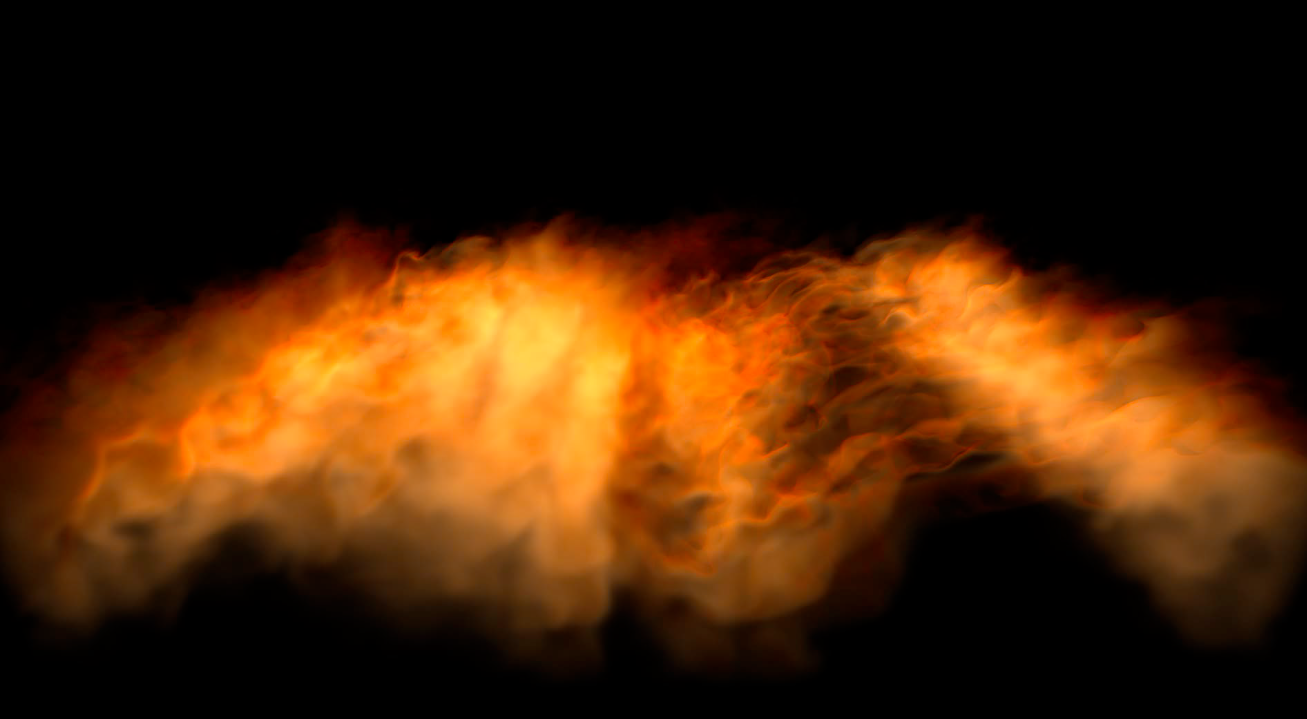 |
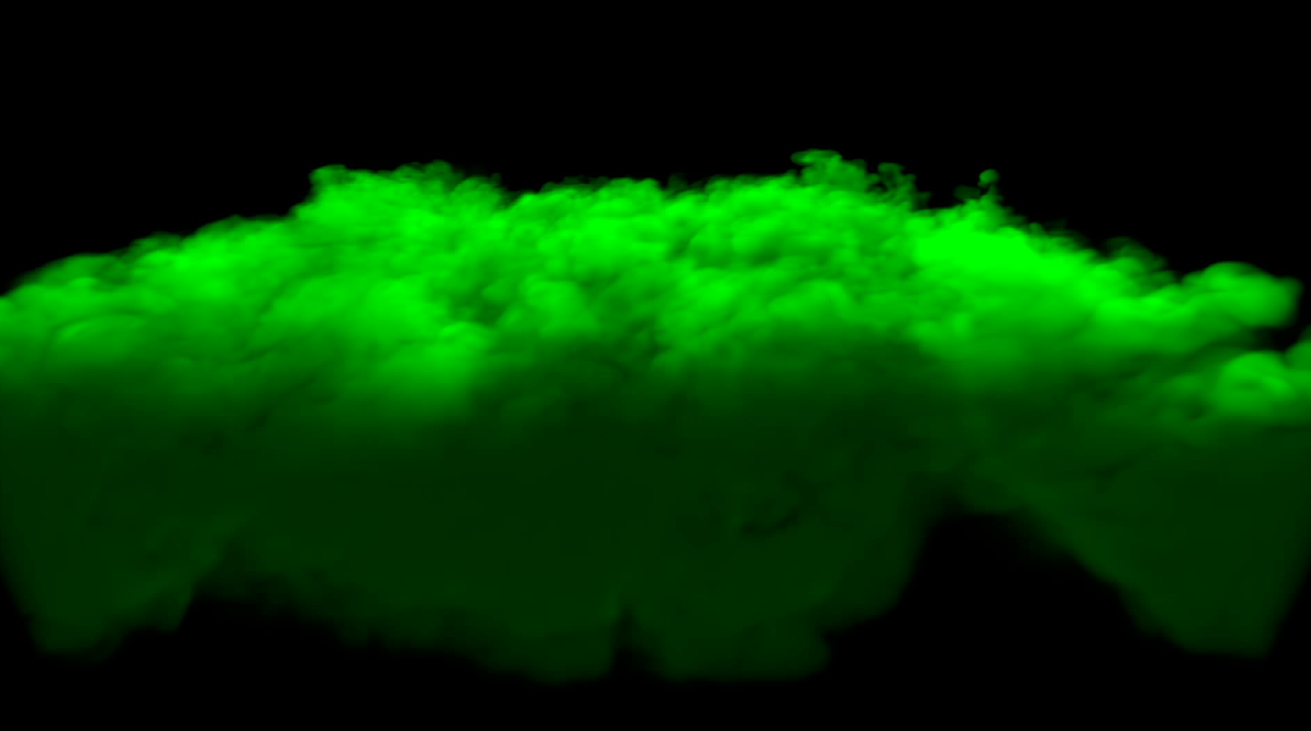 |
| Turntable around the "flame": Hydrogen radical with blackbody color | Turntable around the "smoke": water vapor illuminated by lights |
| Flame revealed through Water vapor ( animation ) |
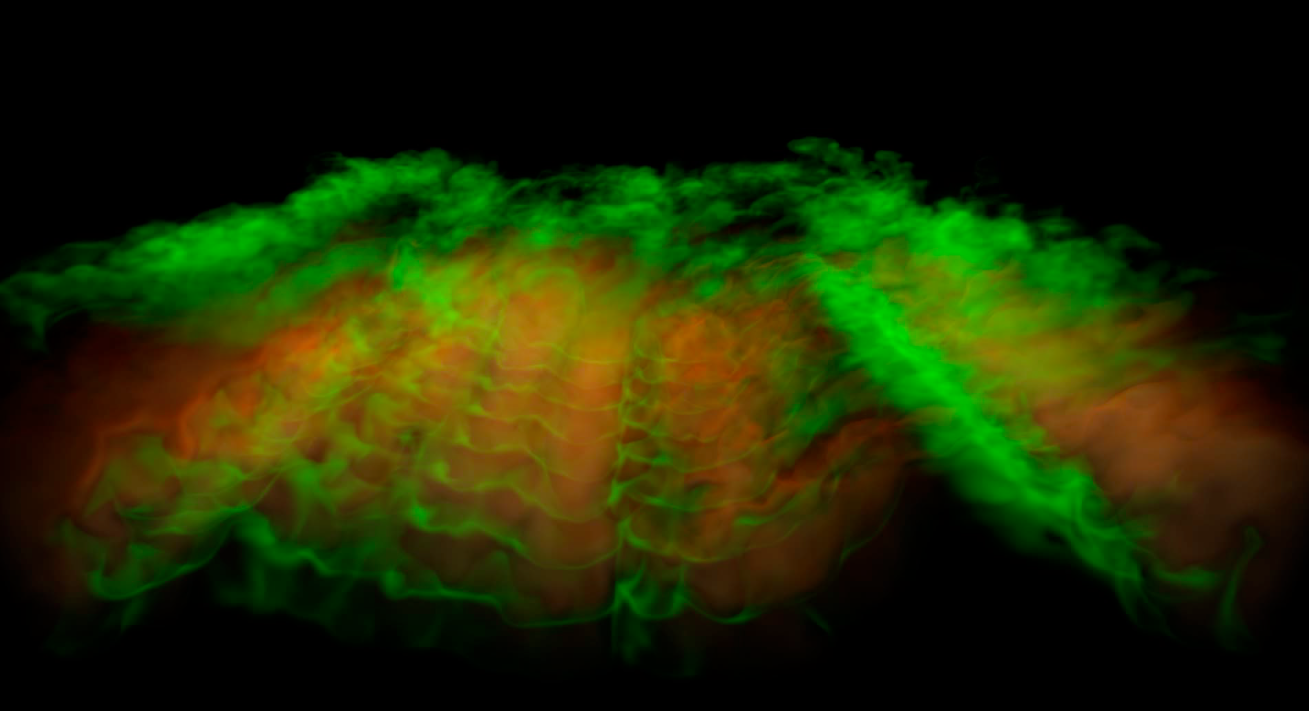 |
| Camera fixed while the water vapor reveals flame. |
The volume rendering method employed here is described in the notes Resolution Independent Volumes (pdf), and is taught in the course CP SC 819 Physically Based Effects at Clemson University.
Here are some examples of non-scientific non-simulated images rendered volumetrically.
| Wisp Flame( animation ) | Fluffy Bunny |
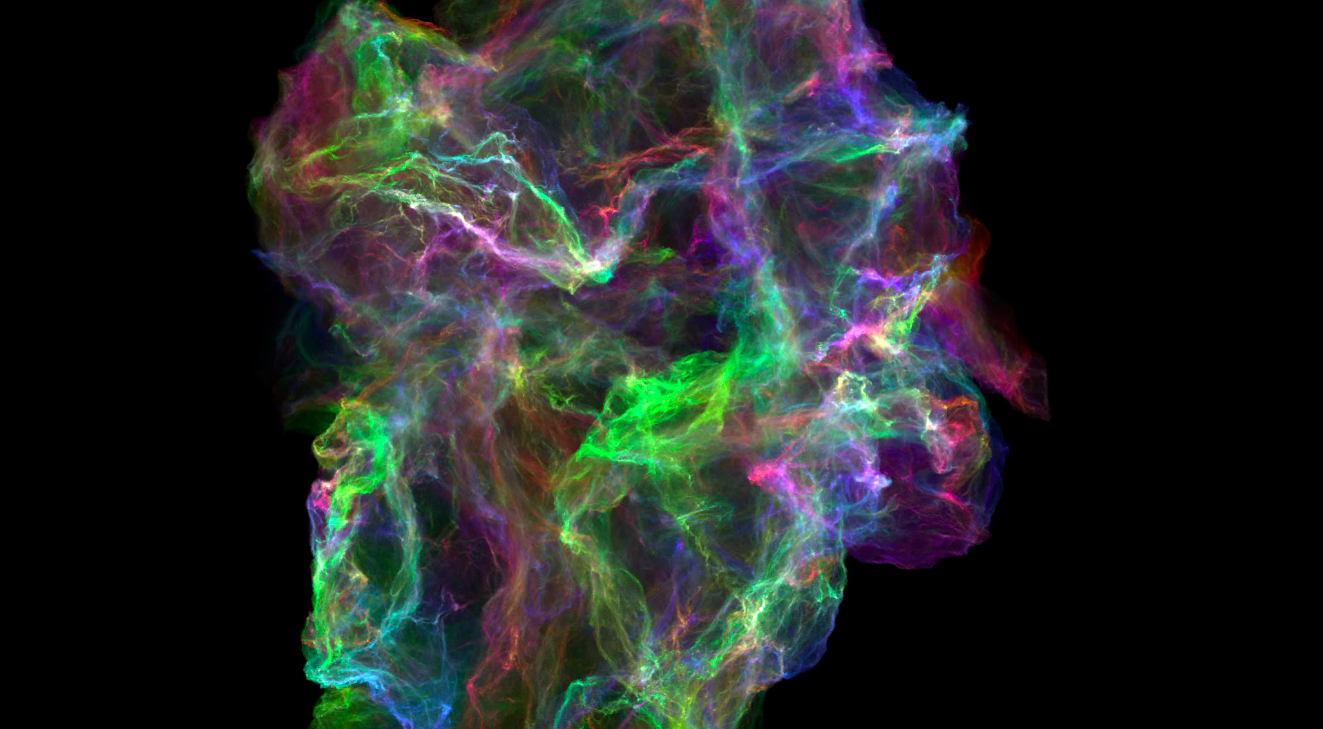 |
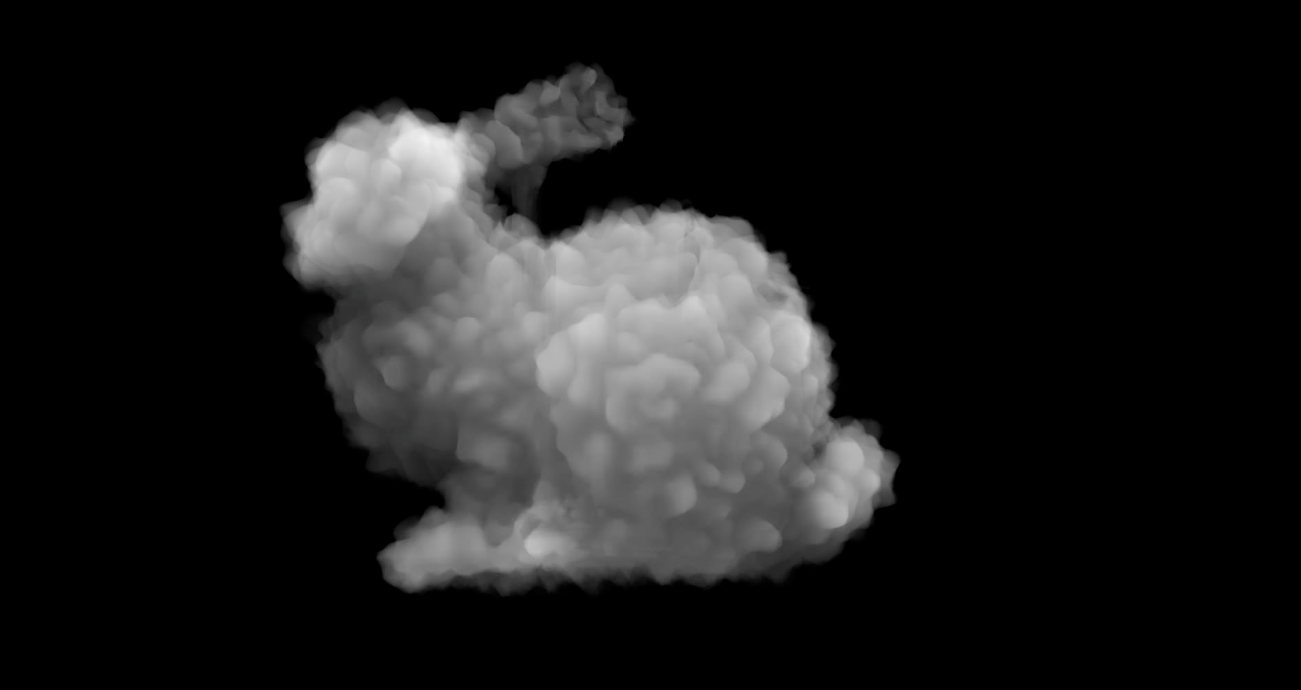 |
| Turntable sprialling into the structure (1800 X 1800 X 1800 grid of density and color) | Bunny levelset displaced by Perlin noise |
| Contact Information: |
Jerry TessendorfProfessor of Visual ComputingClemson University jtessen@clemson.edu |

|

|